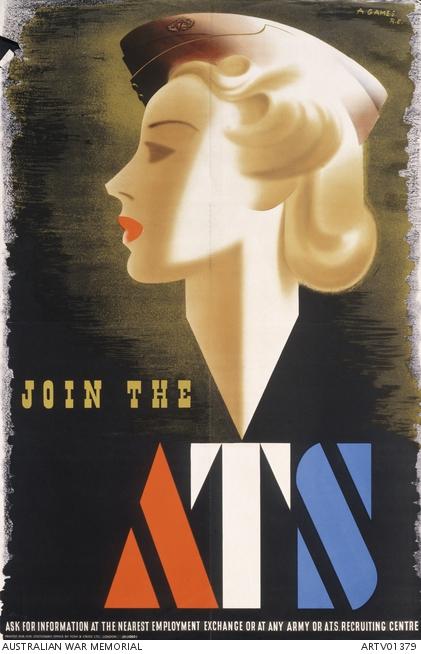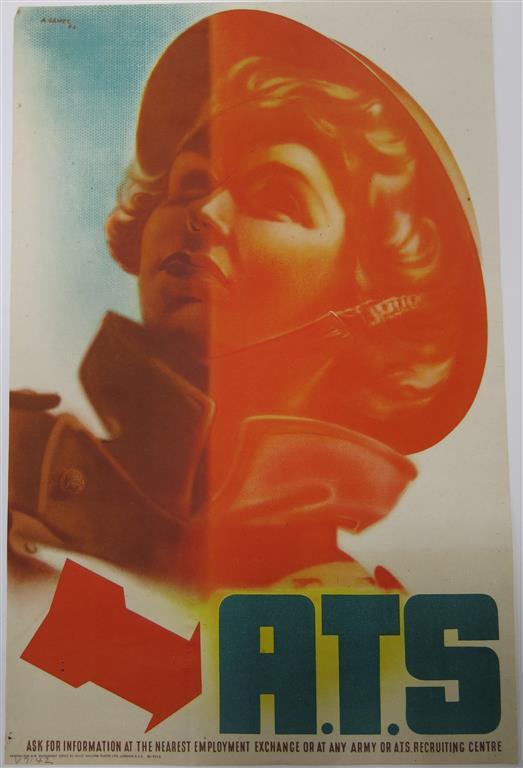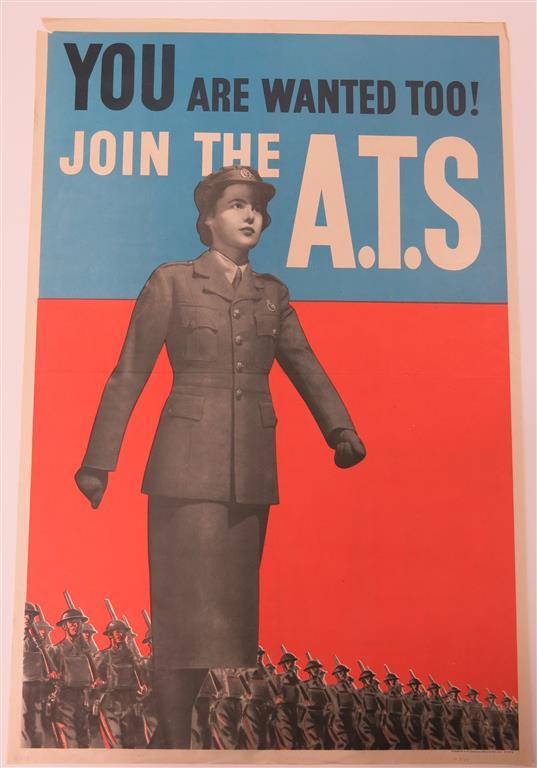The 'Blonde Bombshell'

Abram Games's recruitment poster for the ATS was dubbed the "Blonde Bombshell" and is now on display.
She was dubbed the “Blonde Bombshell” and banned by the British government during the Second World War for being too risqué, but Abram Games’s image of the glamorous blonde with bright red lipstick is now on display as part of the Hearts and Minds: Wartime Propaganda exhibition at the Australian War Memorial.
Exhibition curator Alex Torrens said Games created more than 80 propaganda posters during the Second World War, but his stylised image of a woman wearing an Auxillary Territorial Service forage cap sparked fierce controversy when it was issued in July 1941 about whether it was the right way to encourage women to the join the ATS.
“Games was trying to make joining the ATS much more attractive, but it was criticised in parliament for being just a little too provocative and it was banned,” Torrens said.
“They replaced Games’s design with a very bland poster featuring a photograph of a serving member of the ATS. Games’s second design for the ATS in 1942 was deemed ‘too Soviet’ by Churchill.”
The third and final Games design for the ATS was issued in 1943 and portrayed a much more middle-class English 'Rose', rejecting the Blonde Bombshell’s overt glamour and reference to potential sexual freedoms for a more liberated female wartime population.
“It was also symbolic of the position they were in at the time,” Torrens said.
“The gap between the front line and the home front was dissolving and women were imbued with the very masculine attributes of confidence and determination. Even Philip Zec’s famous 1941 image, ‘Come in to the Factories’, was equated with the empowerment and emancipation of women...
“You had to get out and do your bit, but at the same time there was all the fear in society about what that might lead to.”
Hearts and Minds: Wartime Propaganda is now on display on the mezzanine level in Anzac Hall.

Games's 1942 design was deemed "too Soviet" by Churchill.

Games's 1943 design for the ATS.

The poster the British government replaced Games’s "Blonde Bombshell" design with.